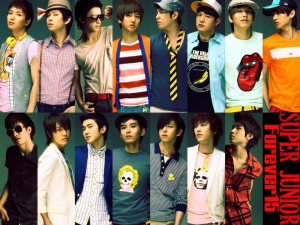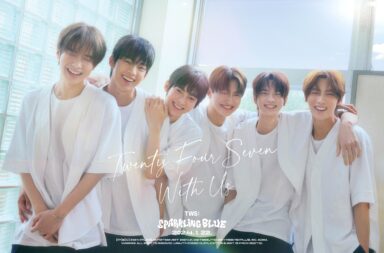 As most K-pop fans have noticed, it is early 2013 and we can already see the big K-pop trend emerging: subunits. Subunit groups that have released songs so far this year include Infinite-H, 4minute’s 2Yoon, Super Junior-M, Super Junior-K.R.Y., and Sistar 19.
As most K-pop fans have noticed, it is early 2013 and we can already see the big K-pop trend emerging: subunits. Subunit groups that have released songs so far this year include Infinite-H, 4minute’s 2Yoon, Super Junior-M, Super Junior-K.R.Y., and Sistar 19.
While subunits are not new to the K-pop scene, we are starting to see a pattern of larger groups breaking into smaller two or three-person units, which allows for focusing on lesser known members and a greater variety in discography. For a subunit to become successful they need to have their own distinct flavors. While successful subunits can transfer some of the popularity to the parent group, less successful units can make fans call into question the merits of the parent group.
With groups spanning anywhere from six to seven members and in Super Junior’s case, up to 15-members, subunits are a heaven sent for those members who are often overshadowed. Super Junior-K.R.Y., is one of the older successful subunits that helped set precedence for future subunits of this generation to follow. Comprised of Kyuhun, Ryeowook and Yesung, they have established themselves as the vocals of their parent group with their musical style and direction focusing on ballads. They have released several chart-topping OSTs, an album and have recently concluded their first subunit world tour. Their recently released Japanese debut single “Promise You” met with immense popularity, reaching #2 on the Oricon Weekly Chart.
[youtube http://www.youtube.com/watch?v=RlmhROGThG0&w=560&h=315] Subunits are great, when done right, but not all subunits have met with success. Some units have made us question the moves of their management. Heard of Rainbow Pixie, the subunit of Rainbow consisting of Jisook, Seungah and Hyunyoung? While the creation of this subunit was their management’s way of trying to garner more popularity and transferring it back to the group as whole, their debut song “Hoi Hoi” wasn’t a particular standout, and seemed to be treading precariously into Orange Caramel‘s territory. Unfortunately, unlike Super Junior-K.R.Y., the Rainbow Pixie lacked a core musical focus to set them apart from the sea of other rookies and comebacks, something that also has plagued the parent group Rainbow as a whole.
Subunits are great, when done right, but not all subunits have met with success. Some units have made us question the moves of their management. Heard of Rainbow Pixie, the subunit of Rainbow consisting of Jisook, Seungah and Hyunyoung? While the creation of this subunit was their management’s way of trying to garner more popularity and transferring it back to the group as whole, their debut song “Hoi Hoi” wasn’t a particular standout, and seemed to be treading precariously into Orange Caramel‘s territory. Unfortunately, unlike Super Junior-K.R.Y., the Rainbow Pixie lacked a core musical focus to set them apart from the sea of other rookies and comebacks, something that also has plagued the parent group Rainbow as a whole.
 Their closest competitor in similarity, Orange Caramel, was a group that experienced a whole different story of success. Consisting of Nana, Raina and Lizzy, the subunit had a strong debut in 2010 with the song “Magic Girl” which immediately met with tremendous popularity and spurred countless parodies. The unit continued their stream of success releasing several other songs and even having a Japanese debut single, a cover of a 1970’s Candies song “My Sweet Devil.” They have since released two mini-albums, the first peaking at #2 and the second at #10 on the Gaon charts, quite a rarity for female subunits. Interestingly enough, the popularity of Orange Caramel may have even begun to overtake the popularity of After School.
Their closest competitor in similarity, Orange Caramel, was a group that experienced a whole different story of success. Consisting of Nana, Raina and Lizzy, the subunit had a strong debut in 2010 with the song “Magic Girl” which immediately met with tremendous popularity and spurred countless parodies. The unit continued their stream of success releasing several other songs and even having a Japanese debut single, a cover of a 1970’s Candies song “My Sweet Devil.” They have since released two mini-albums, the first peaking at #2 and the second at #10 on the Gaon charts, quite a rarity for female subunits. Interestingly enough, the popularity of Orange Caramel may have even begun to overtake the popularity of After School.
But would Orange Caramel have experienced their level of success from the get-go had Rainbow Pixie come first? While that is purely up to speculation, whether or not a sub-group is viewed as pioneering new territory or simply following trends, is something important take into account when considering their success.
 Another more recent subunit success story is Sistar 19. Sistar was not that popular as a group when they debuted as a four-member group. Similar to the move made by DSP for Rainbow, in an effort to up their popularity, their management Starship Entertainment created a subunit consisting of Hyorin and Bora, who debuted with “Ma Boy” which peaked at #2 on Gaon Single Charts. The major difference is that after Sistar 19 met with tremendous success, they brought the popularity back to the group as a whole and helped push Sistar back into the spotlight.
Another more recent subunit success story is Sistar 19. Sistar was not that popular as a group when they debuted as a four-member group. Similar to the move made by DSP for Rainbow, in an effort to up their popularity, their management Starship Entertainment created a subunit consisting of Hyorin and Bora, who debuted with “Ma Boy” which peaked at #2 on Gaon Single Charts. The major difference is that after Sistar 19 met with tremendous success, they brought the popularity back to the group as a whole and helped push Sistar back into the spotlight.
Just like in 2012 when we were bombarded with countless rookie debuts, I predict 2013 to be the year of subunits. In what will become the trend for 2013, it becomes even more important that the musical style and direction of each subunit differ not only from their main group but also from their competitors.
What do you think, Seoulbeats? Should subunits be utilized or should companies just create smaller groups?


